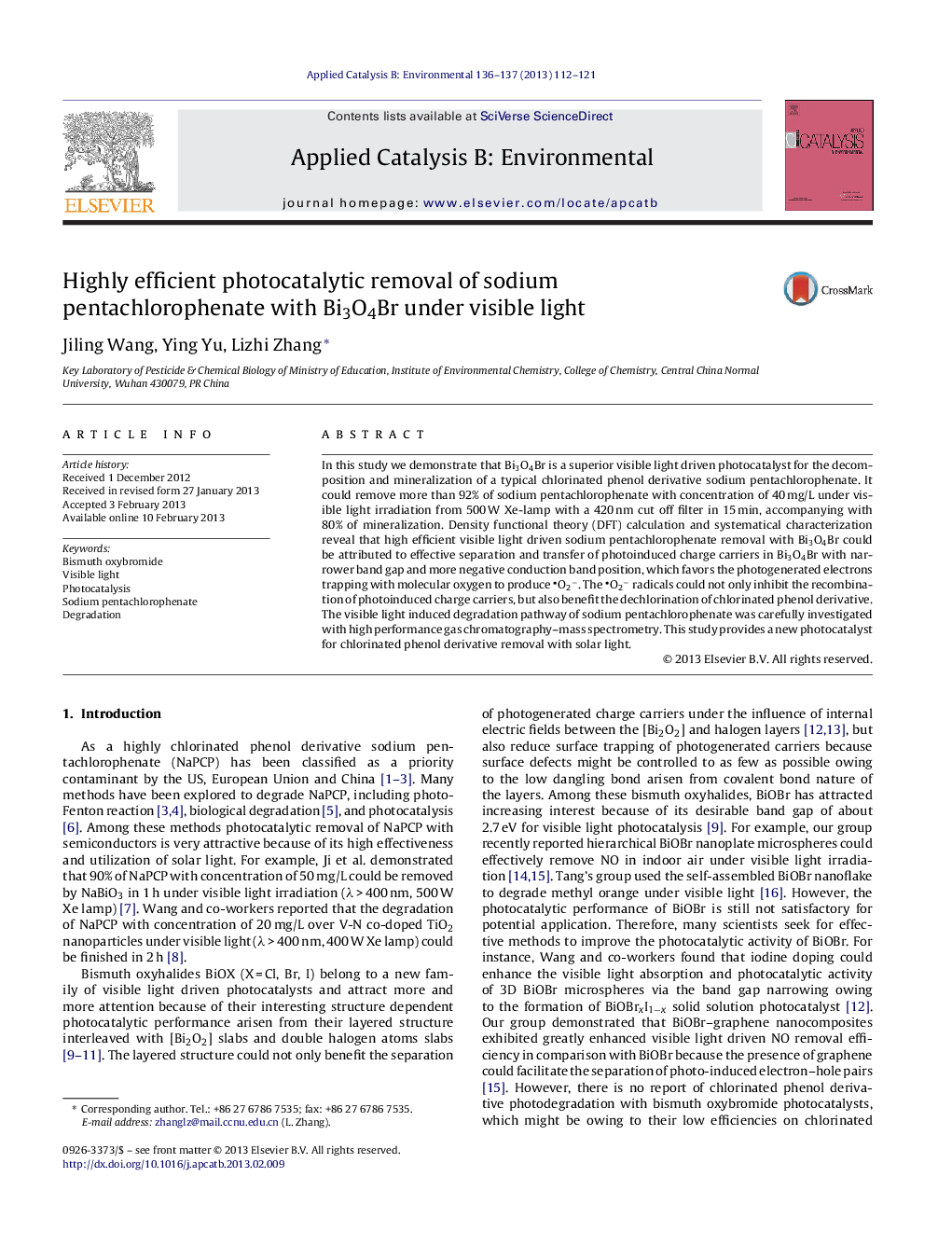| Article ID | Journal | Published Year | Pages | File Type |
|---|---|---|---|---|
| 46317 | Applied Catalysis B: Environmental | 2013 | 10 Pages |
In this study we demonstrate that Bi3O4Br is a superior visible light driven photocatalyst for the decomposition and mineralization of a typical chlorinated phenol derivative sodium pentachlorophenate. It could remove more than 92% of sodium pentachlorophenate with concentration of 40 mg/L under visible light irradiation from 500 W Xe-lamp with a 420 nm cut off filter in 15 min, accompanying with 80% of mineralization. Density functional theory (DFT) calculation and systematical characterization reveal that high efficient visible light driven sodium pentachlorophenate removal with Bi3O4Br could be attributed to effective separation and transfer of photoinduced charge carriers in Bi3O4Br with narrower band gap and more negative conduction band position, which favors the photogenerated electrons trapping with molecular oxygen to produce O2−. The O2− radicals could not only inhibit the recombination of photoinduced charge carriers, but also benefit the dechlorination of chlorinated phenol derivative. The visible light induced degradation pathway of sodium pentachlorophenate was carefully investigated with high performance gas chromatography–mass spectrometry. This study provides a new photocatalyst for chlorinated phenol derivative removal with solar light.
Graphical abstractFigure optionsDownload full-size imageDownload as PowerPoint slideHighlights► Sodium pentachlorophenate could be removed with Bi3O4Br under visible light. ► High efficiency is attributed to effective separation and transfer of charge carriers. ► O2− could inhibit photoinduced charge carriers recombination and benefit dechlorination.
